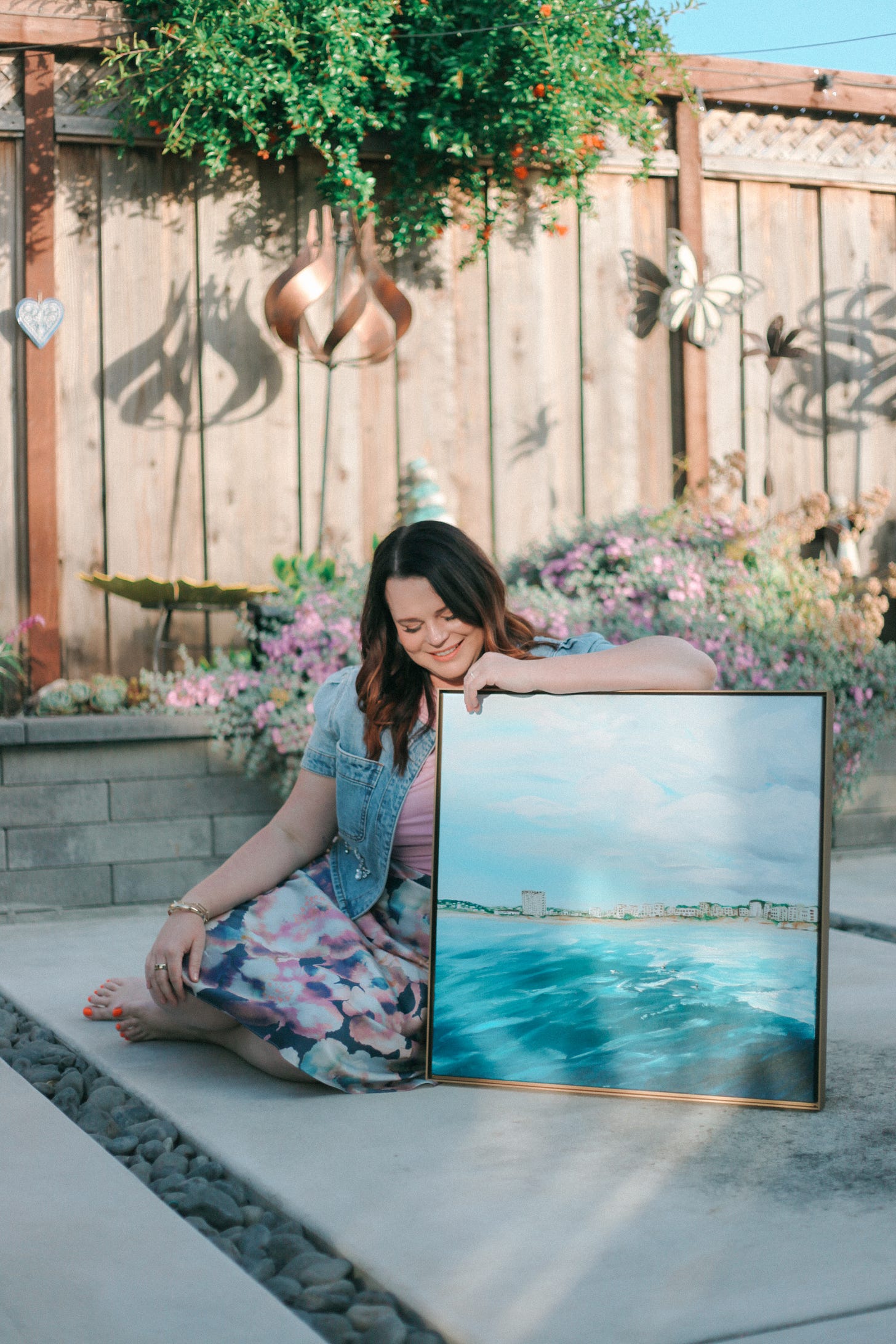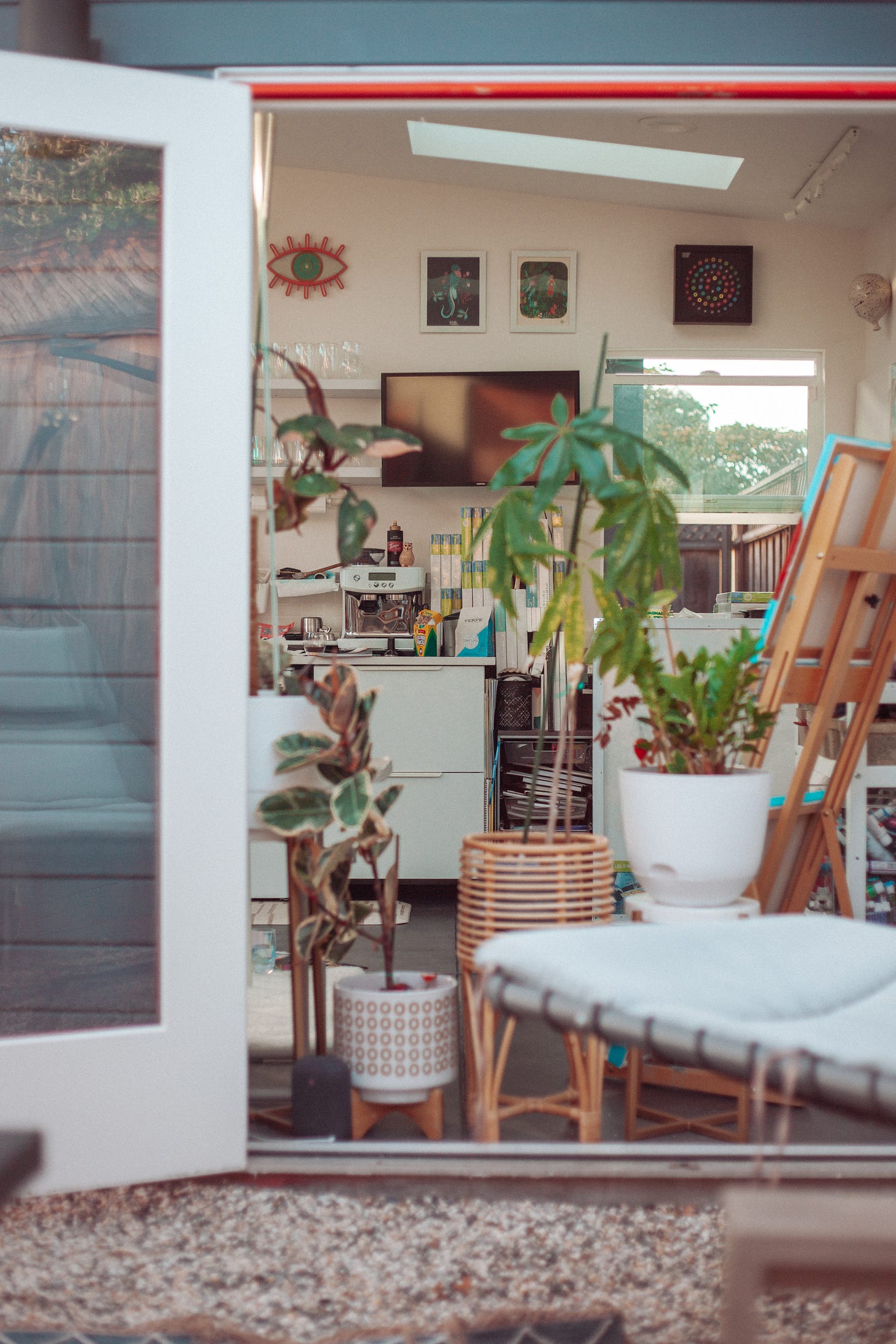Before Ali Hall became known for her dreamlike acrylic landscapes, she was a toddler with a Sharpie and a brand-new white couch. While some parents might have scolded, Ali’s family saw it as a spark. Her mom and grandparents nurtured her creative curiosity from the beginning—enrolling her in early art classes and encouraging her to experiment. “I was always coloring, even under tables,” she remembers. “My mom noticed I colored inside the lines really well, and that stood out.” By ten, Ali was living in California and discovered acrylics—now her signature medium. It wasn’t through school, but with the help of a local art mentor, Mrs. G, who guided her from childhood through her teens. “I stayed with her until I was 18,” Ali recalls. “Eventually, I even became a TA, helping teach kids, including those with special needs. It taught me patience, empathy, and how art could ground people emotionally.”
Grounding, for Ali, is central. Whether she’s guiding a child with a crayon or in her own studio, she sees the act of painting as a return to self. “Acrylics are forgiving,” she says. “You can wipe, layer, redo. There’s a playfulness there. And mistakes? They just turn into something else.” That attitude is evident in her creative process. Most of her paintings go through what she calls the “ugly duckling” stage—a moment where the work feels off or unfinished. But by layering and stepping away, often overnight, she finds clarity. “I’ll look at it again in the morning with fresh eyes and coffee. If I feel a connection, it’s done.”
Her favorite pieces are tied to memories, not just technique. One canvas, inspired by a sunset at Laguna Beach’s 1000 Steps, carries layered meaning. Painted during a period of personal grief, it was both a tribute to a beautiful moment and a way to process loss. “You can have something beautiful in front of you,” she says, “but also be holding something deeply emotional. That duality is what I love about abstract realism—painting with your heart, not just your eyes.”
Ali doesn’t paint on location. Instead, she collects photos from trips and happy places—visual prompts she returns to when the mood strikes. There’s no strict plan, only the pull of what resonates. Her style blends realism with abstraction: water that swells with emotion, skies that shimmer with memory, and brushstrokes that suggest rather than spell out. But art is not yet her full-time career. By day, Ali works in tech as a design leader. She studied both design and painting in college, and for a decade, design took precedence. “With design, you’re creating for someone else. With painting, it’s all me.” A layoff a few years ago rekindled her studio practice. She dove into pop-up markets, built a body of work, and began seeing art as more than a side project—it became essential. Still, balancing both worlds isn’t easy.
Ali schedules weekly painting nights and weekend studio sessions like appointments. “It’s like going to the gym. Even if I don’t feel inspired, I just go. Sometimes just being in the space shifts everything.” That consistent commitment recently led to a new kind of spotlight: Ali was named the featured artist at the Clean Living Oscars Experience in Bel Air. The recognition felt like a natural fit—her work, after all, lives at the intersection of art and intention. With its layered serenity and dreamlike atmosphere, her painting style complements the wellness space effortlessly. “My art brings a sense of calm and presence to a space,” she says. “It’s a beautiful match for a clean living lifestyle—creating environments that feel grounded, thoughtful, and open.” When creativity feels blocked, she doesn’t force it. Instead, she turns to other mediums—like mosaic-making with friends—or simply cleans the studio. “You start to warm up to the idea of making. Sometimes it’s not about the paint—it’s just about staying in motion.”
Her studio is a sanctuary: music on, shoes off, paint in her hair. After undergoing four major surgeries, including one for her ankle, the ability to stand and move freely in that space means even more. “Every painting is a kind of gratitude,” she says. “A celebration of presence.” Ali Hall’s art isn’t just something she creates—it’s something she practices. It’s a dialogue between emotion and expression, patience and process. Her work doesn’t aim for perfection. It aims for truth, and in that truth, she’s building something both beautiful and brave—layer by layer.





